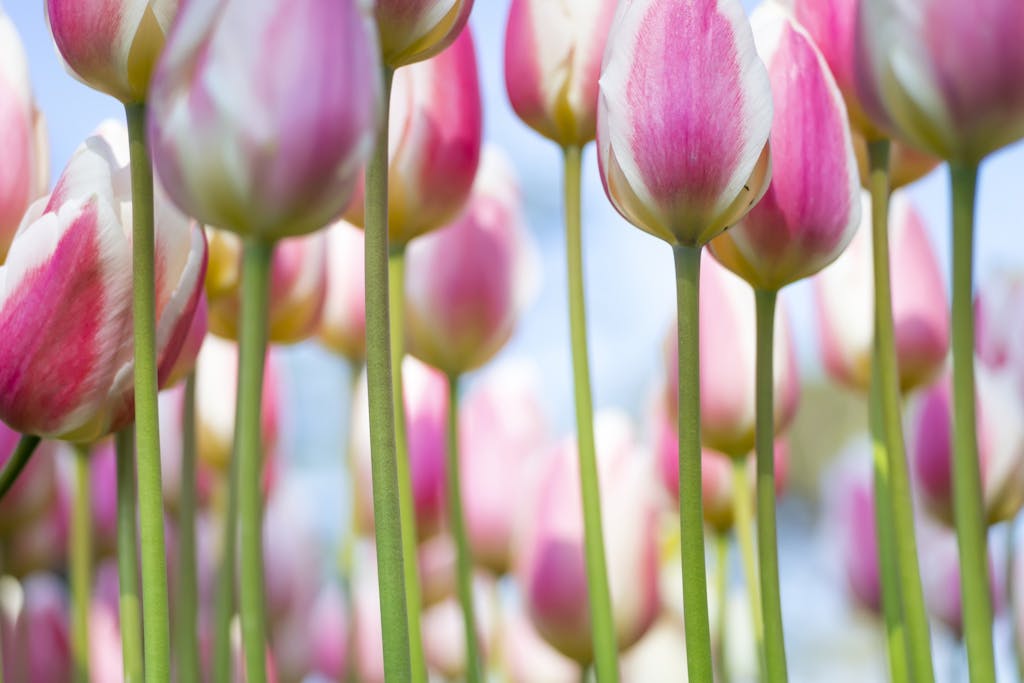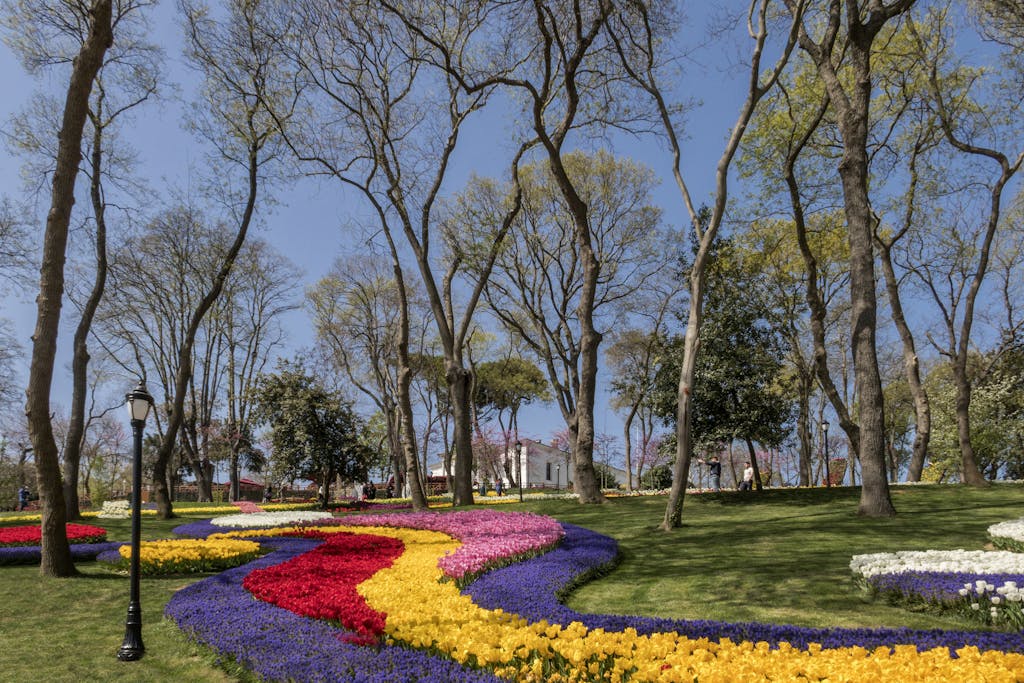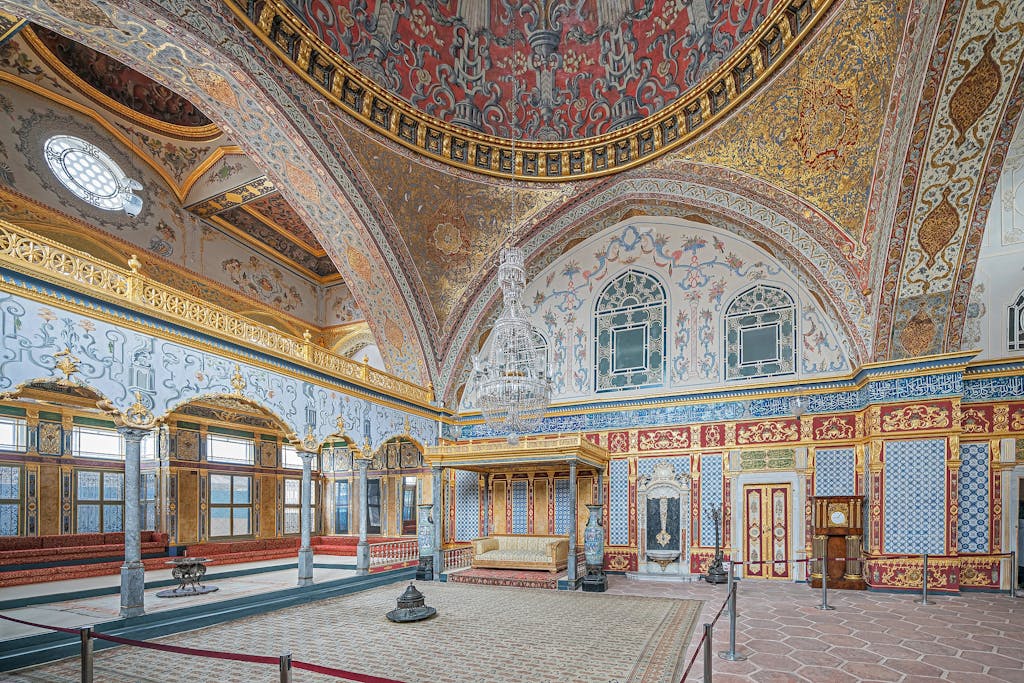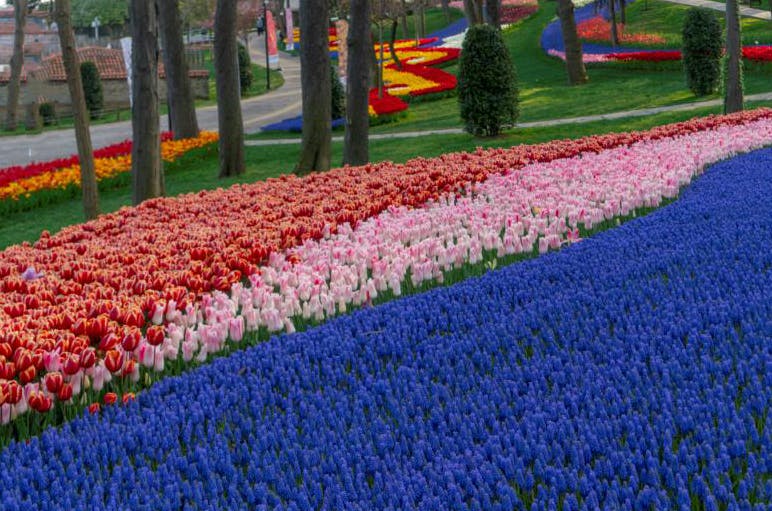Tiptoe Through the Tulips (and Lots of Them) in Turkey
Turkey is obsessed with tulips. Even today, a stylized tulip appears in the logo of Turkey (often spelled Türkiye) tourism and Turkish Airlines, as well as on the airplanes.
Although tulips are frequently linked with the Netherlands, tulips are seemingly everywhere in Turkish art, architecture and design, from pottery, ceramic tiles, paintings, stone and wood carvings, carpets, textiles, and jewelry to swords.
For centuries, tulip motifs have adorned palaces, mosques, fountains, tombstones and the robes and shoes of Ottoman Empire sultans. On my Istanbul visit, it was my most indelible memory: I couldn’t walk into a shop or historic building without glimpsing tulips.
This symbol of beauty, elegance, perfection and love in Turkey is an integral part of its culture, poetry, legends and history, even a “Tulip Era” and “Tulip Rebellion.”
In the Tulip Era (1718-30), a time of peace and prosperity in the Ottoman Empire marked by rich art and literature, tulip cultivation was equated with status, privilege and the good life. Furious because Sultan Ahmet III lavished so much time and money on his tulip gardens at Topkapi Palace in Istanbul, citizens stormed the palace, forced him out, killed the prime minister and burned the gardens in revenge.
Love for tulips’ blooms

But the love for tulips began long before that. Around the 12th century, handicrafts in Anatolia began to feature the tulip as an ornamental motif. Rumi, the 13th century Persian poet and Sufi mystic who lived most of his life in Turkey, was the first writer to mention tulips. “Our hearts are home to a garden of tulips and roses/One cannot wither or suffer there,” a Rumi poem rhapsodizes.
Tulips were also considered to have spiritual significance in Islam. The letters used in the spelling of tulip (lale, in Turkish) and God (Allah) are the same in Arabic. During the 16th century reign of Suleyman the Magnificent, the most powerful Ottoman sultan, poems mentioning the tulip were collected in the Lâlenâme, which Rixos magazine describes as “a poetry book special to tulips,” and an academy was established to focus on tulips.
The yellow tulip stands for joy and hopeless love, the purple tulip for nobility and romance, the white tulip purity and innocence, and the black tulip implies inaccessibility and rarity, writes Gül İrepoğlu, author of Tulip: In Nature, History, Art, a retired professor of art history at Istanbul University and an expert on the country’s tulip culture.
Growing wild in Turkey

Tulips, native to Central Asia, grow wild in almost every region of Turkey, but particularly in Eastern Anatolia and the Mediterranean. Tulips were reportedly first brought to the Netherlands in 1593 by University of Leiden Botanical Garden prefect Carolus Clusius, also known as Charles de l’Ecluse.
The flower created such a sensation, it resulted in the world’s first financial “bubble” in 1636-7, when fans feverishly bid up tulip bulb prices until the market crashed.
The first mention of the tulip in Europe (and the origin of its name in English) was in a 1554 letter from the ambassador of the Austro-Hungarian Empire to the Ottoman Empire. Admiring fields of tulips, he asked workers, whose turbans displayed a tulip motif, what the flower was called, pointing to the design on their turbans. Their reply, tulbent (“turban” in Ottoman Turkish), led to the Latin word for the species, tulipa.
In April, during Istanbul’s month-long Tulip Festival, millions of tulips bloom in parks, squares, gardens and traffic roundabouts in a blaze of colors. The world’s biggest “flower carpet,” composed of more than 500,000 tulips, was planted in front of the Blue Mosque (Sultanahmet Camii), the city’s six-minaret 17th century mosque, in 2019.
But you can find tulips year around, inside this mosque. Many of the 20,000 ceramic tiles, whose floral, tree and abstract designs are largely blue, are inside this mosque.
The Museum of Turkish and Islamic Art, across from the Blue Mosque, contains many tulip designs in its 40,000 exhibits spanning Islamic culture from the 7th century to modern times, ranging from art, carpets to ceramics. It’s in a 16th century building built by the Grand Vizier of Suleyman the Magnificent.

At Topkapi Palace, the center of the Ottoman Empire for almost 400 years, tulip motifs are found in the carved stone fountain of Sultan Ahmet III at the entrance, and in many wall tiles and the Sultan’s painted wood-paneled dining room in its Harem, where hundreds of concubines and eunuchs who served the Sultans lived. Topkapi’s outer garden, Gulhane Park, once reserved only for the Sultan, his court and VIPs, is now a public park abloom with tulips and roses in spring.
The Rustem Pasha Mosque, known as “the Blue Mosque without the crowds,” is an exquisite mosque whose porch façade, walls, mihrab (prayer niche, which faces Mecca) and minbar (pulpit) are blanketed in 2,300 ceramic tiles in 80 floral and geometric patterns, many featuring tulips. It’s just a three-minute walk from the Spice Bazaar.
You’ll find the tombs of Suleyman the Magnificent, and his wife, Hurrem Sultan, the empire’s most powerful woman at the Suleymaniye Mosque, Istanbul’s biggest. Their resting place, not surprisingly, also features tulips.
